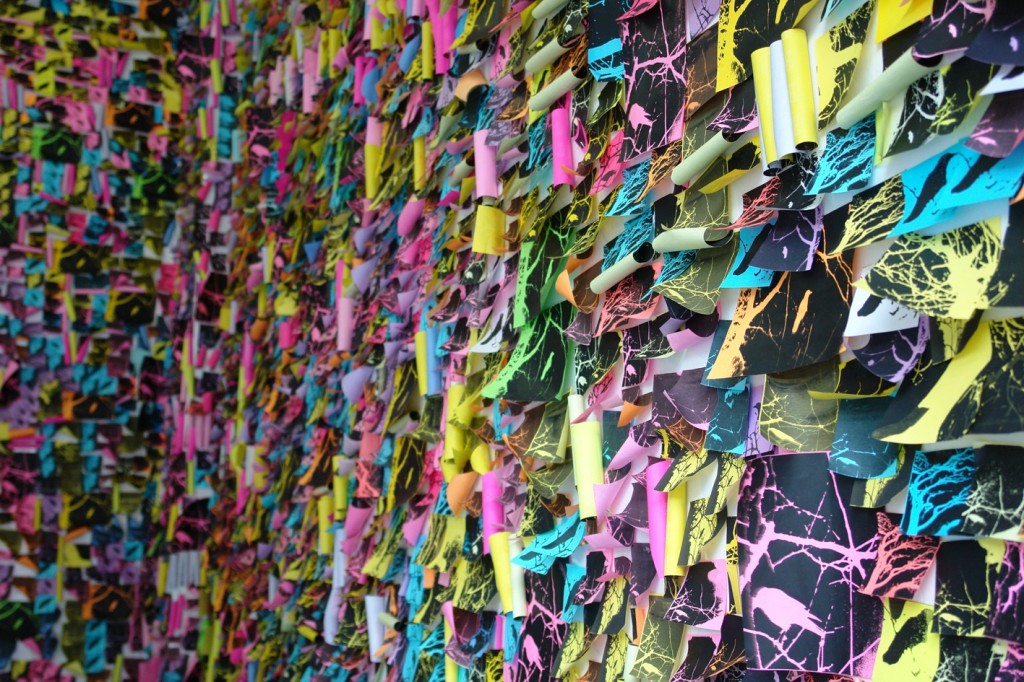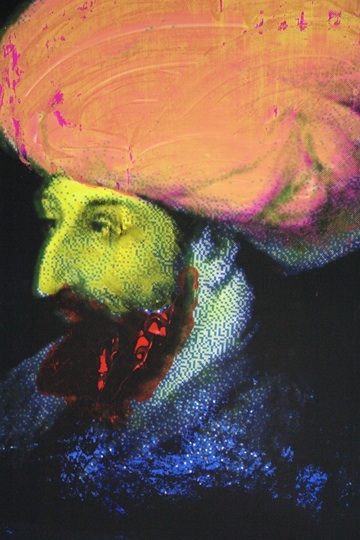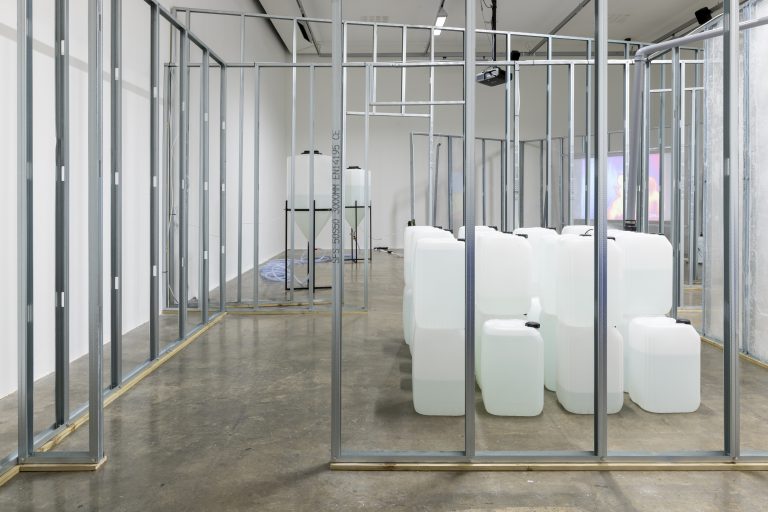 Ardan Ozmenoglu : One Bird, Two Birds, Three Birds, screenprint on stickie notes, installation view, image courtesy the artist.
Ardan Ozmenoglu : One Bird, Two Birds, Three Birds, screenprint on stickie notes, installation view, image courtesy the artist.
Ardan Ozmenoglu is a contemporary Turkish artist. Her work can be shocking and provocative, as in The Dream of a Man, or playful and contemplative, as in One Bird, Two Birds, Three Birds. It can recall well-entrenched contemporary movements, as in FSM, or, along with that, be tied to tradition, as in the Ottoman series. From any point and perspective, however, the logic of the multiple has been the guiding force of Ardan’s artistic credo. Within this preoccupation with reproduction and repetition, printing—especially screen printing—has become her medium of choice. The process of making a screen print is both precise and experimental. It requires careful preparation, but also allows for unplanned elements to enter the composition, such as accidental smudges and spills, which become part of the work. It is this double nature of the screen printing process, its orientation to technological precision and its openness to chance, that fascinate the artist.
 Ardan Ozmenoglu: Ottomans, screenprint on stickie notes, image courtesy the artist.
Ardan Ozmenoglu: Ottomans, screenprint on stickie notes, image courtesy the artist.
In her Ottomans, for example, Ardan uses well-known portraits of four most famous rulers of the Ottoman Empire — Fatih Sultan Mehmet, the monarch who conquered Istanbul; Yavuz Sultan Selim, who presided over the most prosperous period of the empire; and Kanuni Sultan Suleiman, also known “Suleiman the magnificent,” famous for his military conquests and his reconstruction of the empire’s legal system. She takes widely available reproductions of the portraits of these men, already existing in the print form, and puts them through further technological manipulation with the help of screen printing process. Although still recognizable, these centuries-old icons become transformed, turning into new images in and through the process of technological reproduction and planned error. Each image is a copy, but always a unique work, because no one reproduction is identical to its neighbor.
In YUZ, an installation project, many short squiggly pieces of wire fill the room, carefully arranged in close proximity to each other. Because they are not straight, but emphatically wavy and curvy, they cannot be called parallel, but they repeat each other’s position nevertheless. Again, like in the Ottomans, the each piece is similar to the other and yet unique: the waves and curves are not absolutely identical to the neighboring piece, but differ slightly in the depth and degree of their configuration. Looked at from a distance, as a unit, they resemble small waves in an ocean. At a closer look, however, each curvy wire looks like a face drawn in profile, complete with the lips, the chin, and the curve of the nose. We can never be sure of this identification, though, because the artist keeps us away from recognition, the production of a communicative sign, and instead suspends us in that place where the sign is in the process of being created.
 Ardan Ozmenoglu: YUZ, wire, installation, image courtesy the artist.
Ardan Ozmenoglu: YUZ, wire, installation, image courtesy the artist.
FSM confronts us with power and menace of an unknown, heavy, and mysterious object. Again, with close visual scrutiny, this threatening mass loses its impenetrable amorphous quality and reveals itself to be composed of parallel pieces of transparent plastic, each carrying a busy drawing of lines laid out a concentric pattern. The artist, again, generates visual power through repetition of a similar pattern, but at the same time smoothes over the effect of this onslaught by offering a possibility to decipher it, make it as transparent to the mind as possible. In Ardan’s work, then, repetition functions on a fundamental level – it reveals the process of creation of new signs, production of new visual meaning, out of familiar icons or unfamiliar configurations. After all, we learn language and make sense of the world around us through repetition. In Ardan’s case, the language is not phonetic, but visual. This makes the empowering process of learning about the world and ourselves even more compelling.
Natasha Kurchanova is a New York based curator.




